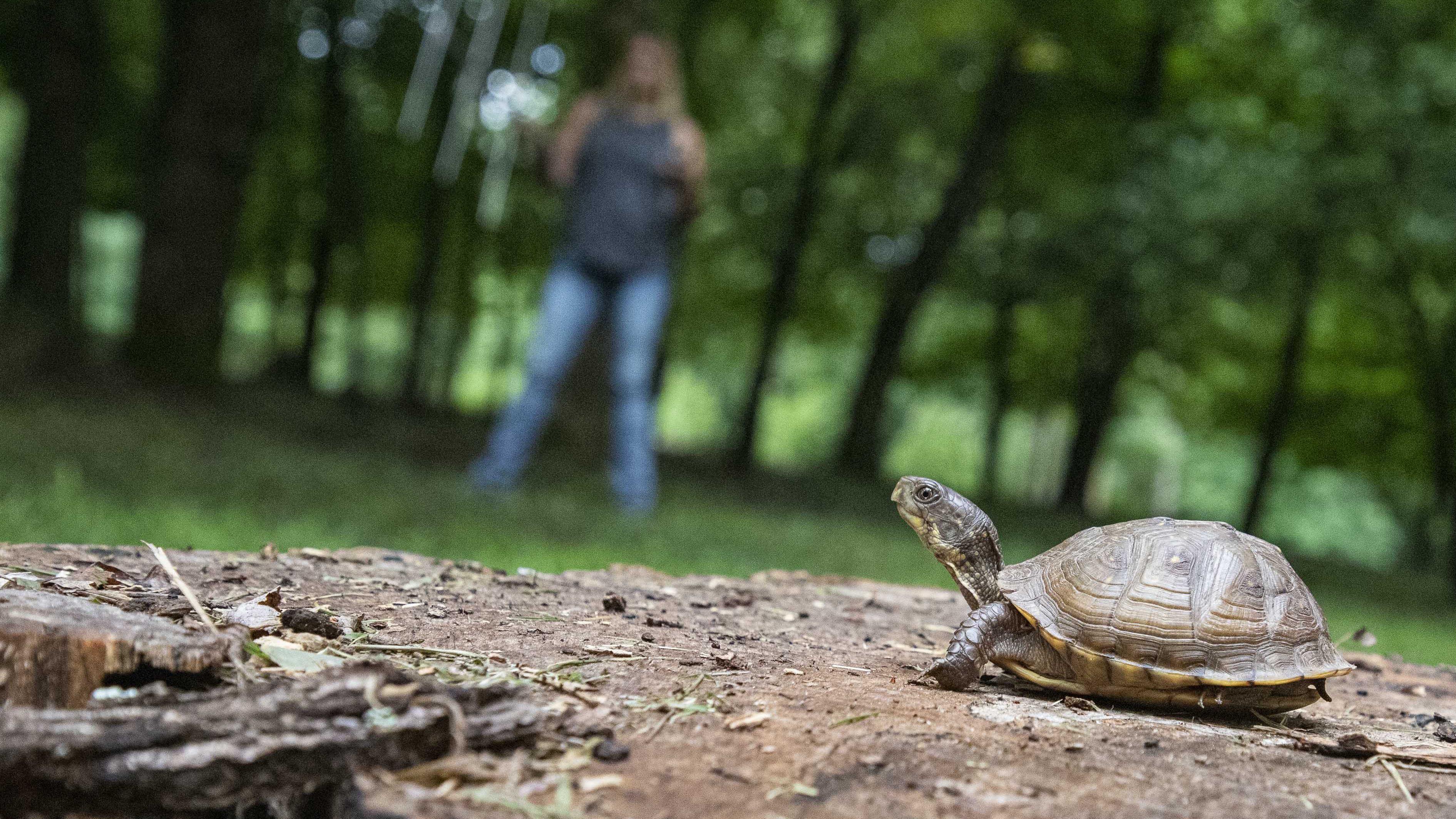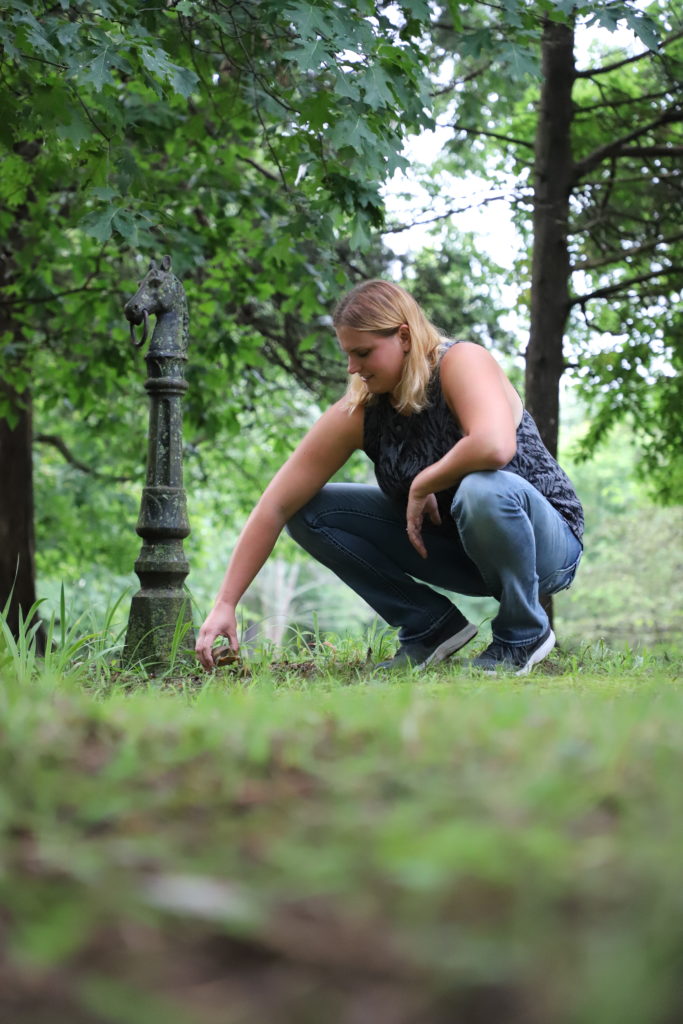
There’s something strange in the woods on Fayetteville’s Markham Hill: a man in a baseball cap walking slowly and erratically, sweeping a large antenna from side to side. He stops to hold a small radio receiver to his ear, takes a few steps back, and bends down to reach under a mossy log. His subject fits snugly in the palm of his hand, a Three-Toed Box Turtle wearing a temporary radio transmitter the size of a gumdrop.
The man in the baseball cap is Alex Meinders, a laboratory technician at the University of Arkansas. Twice a week, he scans the woods of Markham Hill for 11 tagged box turtles and carefully records their locations. This field research is part of a study by UA wildlife ecologist Dr. J.D. Willson commissioned by Specialized Real Estate Group to inform the creation of new homes and hotel facilities on the property. The Willson Lab team is using radio-telemetry to monitor box turtle movements and habitat associations to guide preservation of important habitat elements and to inform the creation of ideal habitat in greenspaces and residential lots.
The Willson Lab will compile thousands of data points to show “hot spots” of turtle activity, including areas where turtles hibernate over winter. This data will inform design in large and small ways. When it comes time for construction, the team will sweep the area and temporarily relocate individual turtles to a holding area nearby or in the lab on campus.
“Defining turtle habitat is not your typical development activity, but Markham Hill is not your typical development,” says Lawrence Finn, Specialized Vice President of Development.
“Where most conventional subdivisions start with carving out as many single family lots as possible, we are taking a more sensitive approach and will first try to understand the archeology, geology, ecology, botany, flora, fauna, and unique landform and let these features tell us where not to build. This is what will define Markham Hill as a conservation community.”
According to Dr. Willson, box turtles were once a conspicuous component of forests in the eastern United States, but populations have declined dramatically in many portions of their range due to road mortality, habitat loss, and collection for the pet trade. As Northwest Arkansas rapidly develops, this study seeks to protect turtles during the construction process and ultimately find ways to protect and create habitat alongside new development. Dr. Willson says that because of the property’s proximity to the center of Fayetteville, wildlife species on Markham Hill are relatively adaptable to living alongside humans, provided that the habitat elements they need are maintained. Half of the property – the most sensitive habitat – will be protected from development. Large portions of the areas to be developed are currently degraded due to past land use and extensive growth of invasive exotic plant species like bush honeysuckle and privet.
“We are optimistic that these areas can actually be improved as wildlife habitat through careful planning and habitat management,” says Dr. Willson. “Our goal is to foster a landscape where box turtles, along with a wide variety of other wildlife, can live alongside residents and continue to enrich the lives of citizens of Fayetteville and students at the University of Arkansas.”

Learning the Lingo
A flagship species is one that serves as an icon or ambassador for conservation of a habitat or ecosystem. Box turtles are an ideal flagship species because they are familiar, attractive, and they benefit from conservation practices that in turn benefit a wide variety of other species. So when we protect and improve turtle habitat, we expect other species to thrive, too, including toads and grey treefrogs, lizards, dozens of species of songbirds, and mammals such as white-tailed deer and red fox.
The original version of this story by Sarah King with photos by Zac Trout appeared in Connection, our quarterly newsletter.

